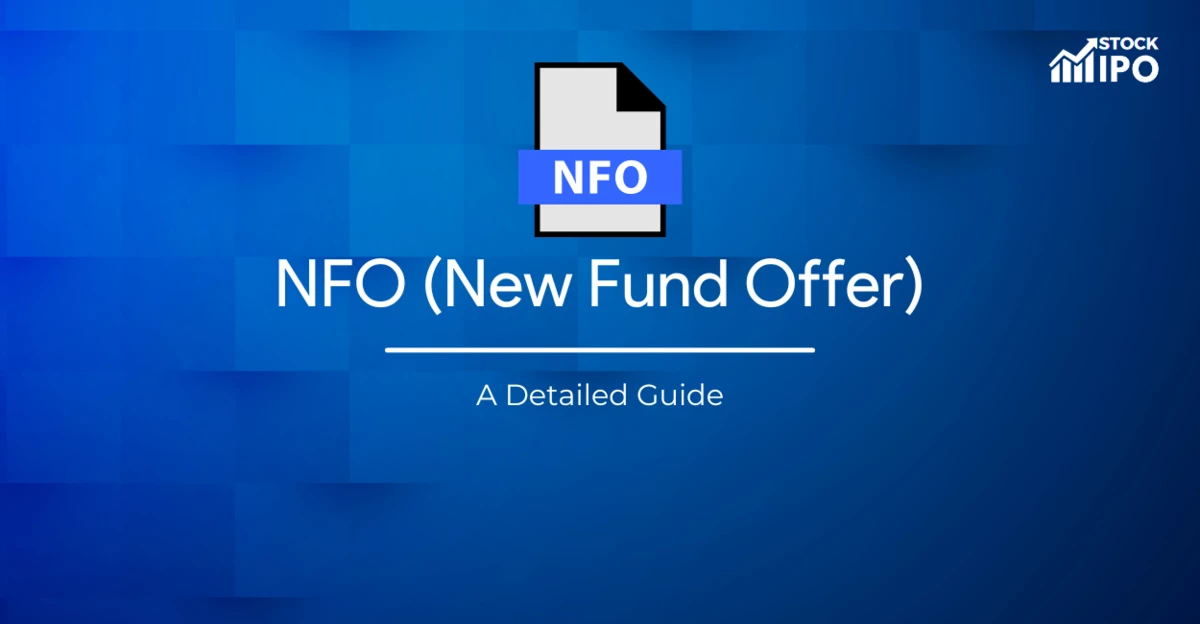We forget that there are many possibilities available when we proclaim that “change is the only constant.” And when such decisions could have an impact on your wealth, careful consideration should be given. As a result, in the article below, we will see some of the best-performing mutual fund schemes that you can add to your portfolio while you realize the advent of 2023.
To properly grasp the reasons behind the decisions made and to be able to modify as necessary, it is crucial to briefly comprehend the various types of such funds before we leap right into the best performers.
Types of Mutual Funds
Here are the list of mutual funds which you need to before going through the best-performing mutual funds in India.
Equity Funds
The funds that invest primarily in stocks and shares of firms are known as equity funds. Although they are seen as risky, they could provide larger profits over a longer period of time. It further has following types –
Investments are made in companies with large market capitalizations. These companies are reputable and trustworthy.
2. Mid-Cap Funds
Investments are made in companies with medium sized capitalizations and are relatively more risky as compared to large-cap funds, but not as risky as small-cap funds.
3. Multi-Cap Funds
These funds are invested in stocks or companies, irrespective of their size or sector. They provide the benefit of diversification by investing across the market.
As the name suggests, investments are made in the stocks of companies with small market capitalizations, which are highly volatile and risky.
5. Debt Funds
Debt funds invest in market investments in debt securities like corporate debentures, government bonds, and other fixed-income securities. When compared to equity funds, they are relatively safe.
6. Hybrid Funds
Hybrid funds make investments in a variety of assets, including debt and equity. In order to balance risk and return, some funds may have more debt and less equity than others, while others may have the opposite.
There are more types of mutual funds, including sectoral, index, and ELSS funds. Liquid funds are one of the additional types of debt funds. The most typical ones are those that were just mentioned
Direct vs Regular Plans
Long after mutual funds were established, the idea of direct plans was introduced. Prior to 2013, it was simply referred to as “mutual funds” rather than a direct plan or regular plan fund, as it is now. The brokers were called by the prospective investors, and they would buy, sell, and decide for the investors, giving them a profit after subtracting their commissions.
Direct Plan
A direct plan fund is for someone who is capable of making their own decisions and is knowledgeable about mutual fund selection. The fact that picking this option saves on broker costs is one well-known feature of this sort of fund. Even if it avoids broker costs, this plan might not be the best option for someone who doesn’t know what to choose or doesn’t want to deal with the trouble of double-checking numbers and information.
Regular Plan
A regular plan is ideal for those who, as previously mentioned, lack investing knowledge and prefer guidance in selecting investments based on their objectives and time horizon for investments. Even though there is an additional broker cost, it is preferable to choose this over losing money by making an ill-informed choice.
How many Mutual Funds should I invest in?
Here too, the adage “less is more” applies. More invested money does not necessarily translate into higher returns. The intention of an investor is to surpass the market’s performance. The target should be 16–17 percentage points whenever an index yields 14–15%. If more funds are invested in, the market will effectively be absorbed by the stocks, balancing everything out and generating returns that are nearly identical to those generated by the market, which is comparable to purchasing an index fund.
Diversification is important, but over-diversification can too lead to almost no returns and balancing out all the returns with the losses giving the same returns in the market. To conclude 2-3 funds in the portfolio are enough to see the expected returns.
Best Performing Mutual Funds in India
Following are some of the best performers in the market currently under different categories, let’s take a look
Large-Cap Funds
| FUND NAME | 3-Year | 5-Year | 10-Year |
|---|---|---|---|
| CANARA ROBECO BLUECHIP EQUITY FUND | 16.45% | 14.38% | 14.48% |
| MIRAE ASSET LARGE-CAP FUND | 14.47% | 11.38% | 16.46% |
1. CANARA ROBECO BLUECHIP EQUITY FUND- Direct Plan-Growth

Over the benchmark, this fund has regularly outperformed it. The fund has an AUM of 8666.25 crores and a NAV of Rs. 47.16. The fund’s 1-year return was -1.01%, but the long-term results paint a positive picture.
2. MIRAE ASSET LARGE-CAP FUND- Direct Plan – Growth

Even though the fund has a large AUM of Rs. 34194.26 Crores, its performance has not deteriorated. The fund has produced exceptional long-term returns with an expense ratio of 0.53%, despite the fact that its 1-year return was -0.67%.
Mid-Cap Funds
| FUND NAME | 3-Year | 5-Year | 10-Year |
|---|---|---|---|
| AXIS MIDCAP FUND | 18.46% | 15.26% | 18.29% |
| DSP MIDCAP FUND | 13.75% | 9.07% | 16.68% |
| KOTAK EMERGING EQUITY FUND | 22.60% | 14.04% | 19.91% |
1. AXIS MIDCAP FUND- Direct Plan-Growth

One thing reading these returns tell us is that long-term investments and patience is the key. Similar to the large-cap fund. The Axis Midcap fund, such as the large-cap fund, has a poor 1-year return generation, standing at -6.61%. The fund’s AUM is Rs. 19144.39 Crores, and its NAV is Rs. 74.06.
2. DSP MIDCAP FUND- Direct Plan-Growth

Although this fund only has a 1-star Crisil Rating, it has been performing well over the past few years. The fund’s SIP returns increase to 12.54% over a three-year period and potentially produce superior gains over a longer time frame. The assertions are supported by the NAV of Rs. 93.67 and AUM of Rs. 13699 Crores. However a large AUM may not be ideal, the fund continues to provide returns.
3. KOTAK EMERGING EQUITY FUND- Direct Plan-Growth

Even though this fund’s size is enormous for its class, it has handled everything well in the past few years. This fund’s 1-year return of 2.76% is remarkable when compared to the benchmark’s return of merely 0.9%. The fund’s NAV is Rs. 85.47 and its AUM is Rs. 23334.64 Crores.
Flexi-cup funds
| FUND NAME | 3-Year | 5-Year | 10-Year |
|---|---|---|---|
| KOTAK FLEXI CAP FUND | 14.01% | 11.32% | 16.34% |
| PARAG PARIKH FLEXI CAP FUND | 21.91% | 16.08% | – |
| UTIL FLEXI CAP FUND | 14.16% | 12.04% | 14.21% |
1. KOTAK FLEXI CAP FUND- Direct Plan-Growth

The fund nonetheless maintains a satisfactory degree of diversification despite allocating the majority of its assets to large-cap equities. The fund has a 3-star CRISIL rating with an NAV of Rs. 60.89 and an AUM of Rs. 37418.1 Crores. With 1-year returns of 1.68%, the fund outperformed its benchmark, which had 1-year returns of 0.5%.
2. PARAG PARIKH FLEXI CAP FUND- Direct Plan-Growth

The AUM of this fund has increased to Rs. 28248 Crores as a result of it recently becoming popular among many advisors. Notwithstanding this, the fund’s size has not had much of an impact on its performance, which has stayed excellent throughout time. The fund’s NAV is Rs. 51.75. The fund also makes investments in select international stocks, which offers a reasonable degree of diversity.
3. UTI FLEXI CAP FUND- Direct Plan-Growth

The NAV of the fund, which really is Rs. 240.11, does seem a little excessive when compared to its competitors, but it can be explained by considering the returns the fund has consistently provided over time. As shown in the above table, it has consistently delivered returns all through the years while managing an AUM of Rs. 24929 Crores.
Small-Cap Funds
| FUND NAME | 3-Year | 5-Year | 10-Year |
|---|---|---|---|
| AXIS SMALL CAP FUND | 25.86% | 18.69% | – |
| SBI SMALL CAP FUND | 27.28% | 13.59% | 25.39% |
1. AXIS SMALL CAP FUND- Direct Plan-Growth

When the returns are as depicted in the table above, the NAV of Rs. 71.39 and the AUM of Rs. 11390 Crores represent a fair value. The fund’s 1-year returns are just 1.48%, better than its benchmark’s -7.18%. Although the expense ratio may be marginally greater than that of its peers, if invested in for a longer period of time, the returns look good.
2. SBI SMALL CAP FUND- Direct Plan-Growth

This fund has only invested in high-quality stocks. Although the NAV of Rs. 125.71 and AUM of Rs. 15348 Crores seem a little excessive, everything appears to be in order given that the 1-year return was also 4.44% while NIFTY was at -5.77% for the year prior.
Conclusion
These mutual funds were among the best-performing ones in their respective categories. However, one must be able to infer that not all elements of a fund are what an investor may be searching for, and a fund that offers strong returns also requires persistence on the part of investors since most mutual funds take three to four years to reach their full potential.
Additionally, it should be understood that even though a newly created fund may appear to be full of potential, a person seeking lower risk should wait and carefully consider the investments and returns provided by the fund in order to make the best choice.







